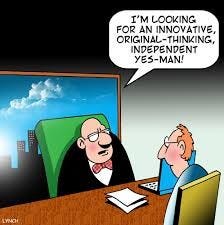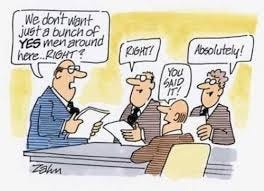The Most Dangerous Engineer in the Room: The One Who Always Says "Yes"
Why saying “yes” too often can quietly destroy great engineering teams
There’s always that one engineer.
The one who nods along in every sprint meeting, signs off on impossible timelines, accepts vague requirements without a blink, and makes even the most absurd product decisions sound doable. Everyone loves them, until the build fails, the feature backfires, or the whole system breaks under scale.
They’re not a bad coder. They’re not lazy. In fact, they’re often seen as the “go-to person”, calm, collaborative, and dependable. But they’re also the most dangerous person in the room.
Because here’s something I learned over the years:
In tech, blind agreement isn’t helpful. It’s hazardous.
I’ve seen it time and again: startups that crash from burnout, launches that go sideways, teams that lose their best talent, not because of bad code, but because no one said no. Because someone, somewhere, agreed when they should’ve questioned.
So, what do you think?
Why it happens, what it costs us, and what we can actually do about the “Yes-Man Engineer”.
Why they show up, why they thrive in unhealthy engineering cultures, and why their silence can sink your software.
Let’s see.
Why Some Engineers Always Say Yes
You’ve probably met this person. You’ll find them in every team. The engineer who works late, agrees to every request, jumps on urgent fixes without pushback, and somehow makes even the messiest deadlines look achievable. In fact, there’s often more than one.
They aren’t loud. They don’t complain. And on the surface, they seem like every manager’s dream: productive, polite, and reliable. But if you’ve led a team long enough, you know what follows: missed expectations, rising stress, and a product that’s quietly rotting from the inside.
Because somewhere along the way, we started mistaking quiet agreement for leadership. And in that silence, problems grow. Blind yes don’t just derail sprints, they corrode culture.
“Yes” is easy. “No” takes courage.
And if you’ve built or led software teams, you know exactly how rare that courage is, especially when there are deadlines, investor pressure, or a “quick hack” breathing down your neck.
Back in 1986, a NASA engineer named Roger Boisjoly saw something others overlooked or ignored. He noticed the O-rings on the space shuttle Challenger might fail in cold weather, leading to a catastrophic outcome. He voiced his concerns, warned his leadership, and even pleaded for a delay. But management, pressured by deadlines and politics, chose to proceed. Roger said no. They said yes. The Challenger launched and exploded just 73 seconds later.
Seven astronauts lost their lives.
That moment became one of the clearest, most tragic examples of what happens when technical dissent is ignored. It wasn’t just a technical failure. It was a cultural one, a system that punished hesitation and rewarded agreement, even when it was deadly.
A Pattern That Still Exists
Think the Challenger story is too old? Fast forward to Boeing’s 737 MAX. Internal emails later revealed engineers joking about safety checks, regulatory blind spots, and knowingly letting things slip.
One Boeing engineer infamously wrote, “Would you put your family on a MAX simulator-trained aircraft? I wouldn’t.”
But the project moved on. Boxes got ticked. The software got shipped. And two planes crashed.
You don’t need to be in aerospace for this to matter. In SaaS, in cloud, in mobile, this kind of agree-to-everything mindset leads to bloated features, insecure code, technical debt, and a culture where real issues get buried under fake harmony.
The Real Reasons Behind the Nod
So why do smart engineers keep nodding?
Fear of being the bottleneck.
Performance reviews that reward compliance over courage.
Poor leadership that doesn’t create space for challenge.
And let’s be honest, sometimes just sheer burnout.
Saying yes becomes a survival instinct.
We’ve all heard stories like this in retros: “I knew it wouldn’t scale, but we didn’t have time.”
That’s not laziness. That’s a systemic failure to prioritise dissent.
What Team Silence Really Means
In high-performing teams, there’s an illusion of harmony. Everyone seems aligned. Until you peel back the sprint board and find band-aid over band-aid, tech debt creeping like mold in a basement.
Groupthink isn’t just a term from psychology textbooks; it’s live and kicking in JIRA comments and code reviews.
The signs?
Nobody asks why.
Dissenters get labelled as “difficult.”
Teams default to past decisions without re-evaluation.
A yes-man doesn’t always wear a smile. Sometimes, they sit quietly, letting flawed ideas pass just to avoid confrontation.
What Healthy Engineering Teams Do
Ah, now let’s talk solutions. Because no, the answer isn’t to hire contrarians who fight every spec doc like it’s a courtroom. 🙂
Great engineering cultures do this instead:
Normalise Saying No: In my teams, we celebrate engineers who raise red flags. “No” means someone’s thinking.
Create Safety for Dissent: Psychological safety isn’t a nice-to-have. It’s a product quality metric.
Reward Insight, Not Agreement: Promote those who challenge, not just those who deliver.
Run Red Team Reviews: Borrow this from security, have teams try to break the idea before it goes into build.
Make Leaders Model Disagreement: If your tech lead never admits uncertainty, you’re training a team of nodders.
When Saying ‘Yes’ Starts Breaking Things
At one startup I advised, there were two engineers everyone counted on. Smart, fast, calm under pressure, and always willing to say yes. Product wanted to add five features in a single sprint? They said yes. Leadership wanted a redesign done in two weeks? Yes again. Sales needed a custom API by Monday? You guessed it, yes.
They weren’t trying to impress. They genuinely wanted to help. But over time, the quality dropped. Tech debt ballooned. Bugs started slipping into production. The team began burning out, quietly.
One day, during a retro, one of those engineers finally said, “I knew this wouldn’t work. I just didn’t want to block anything.”
That was the wake-up call.
We didn’t need new tools or more process. We needed to fix the culture. I asked the team to start doing pre-mortems. Anonymous feedback. Red flags became a standard part of planning. PMs were told they could push back. Engineers were encouraged to say: “this feels wrong.”
The velocity dipped for a few weeks. But then? Stability returned. Confidence grew. The yes-men became respected challengers.
Sometimes it’s easy to find - just by questioning internally.
It’s Your Responsibility to Turn That Yes-Man into a No-Man
If you are a founder or a leader, then…
You build the culture.
You decide whether disagreement is punished or welcomed. Whether engineers feel safe to flag a bad idea or are pressured to say yes to keep the sprint moving.
Product teams don’t grow because everyone agrees. They grow when someone dares to question, to pause, to ask, “Is this the right thing to build?”
So create that space. Encourage that voice. Reward that friction.
Because the first time a quiet engineer tells you, “This won’t scale,” and you listen, you’ve already made your product stronger.
And if you’re the yes-man reading this: try saying no once this week. Even just once.
That small refusal might be the most powerful thing you contribute all month.



